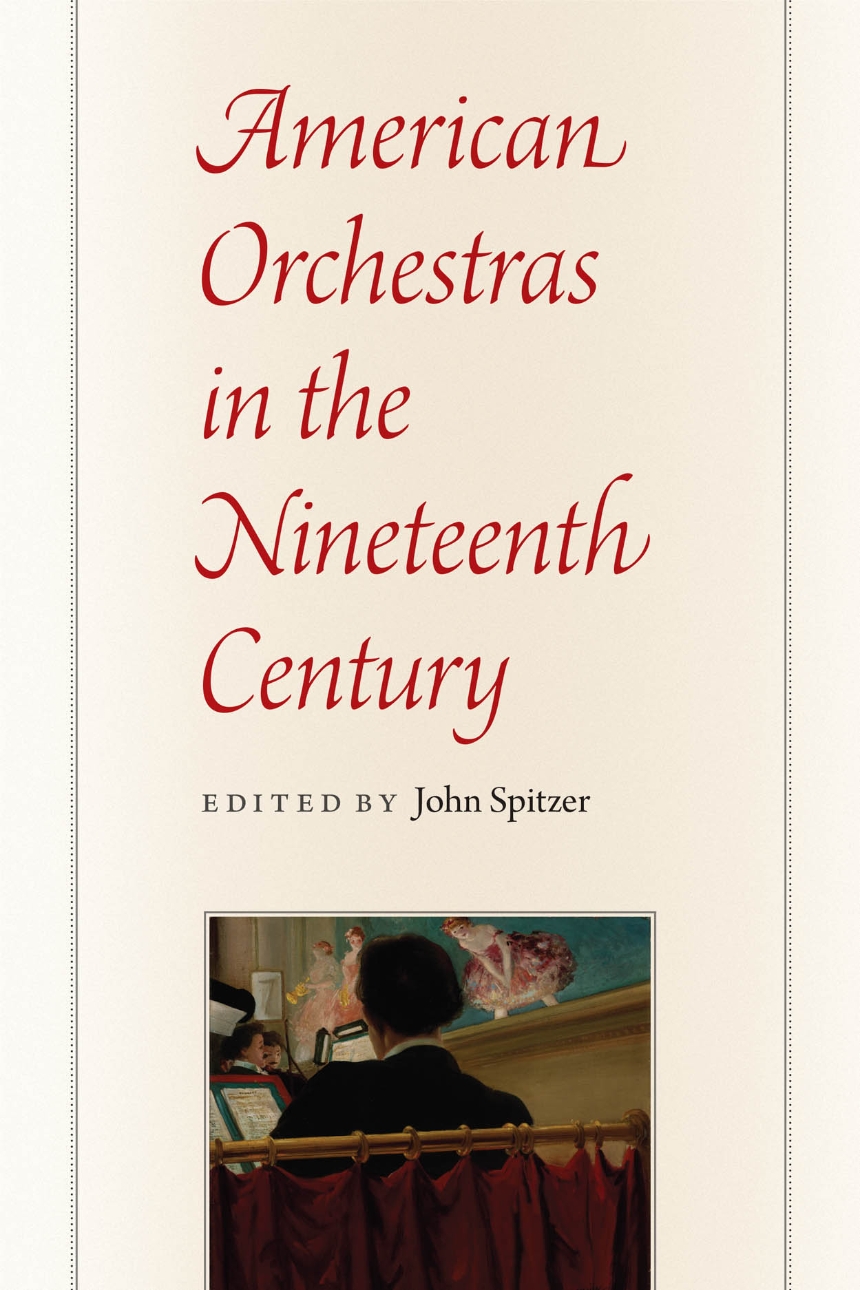American Orchestras in the Nineteenth Century
Studies of concert life in nineteenth-century America have generally been limited to large orchestras and the programs we are familiar with today. But as this book reveals, audiences of that era enjoyed far more diverse musical experiences than this focus would suggest. To hear an orchestra, people were more likely to head to a beer garden, restaurant, or summer resort than to a concert hall. And what they heard weren’t just symphonic works—programs also included opera excerpts and arrangements, instrumental showpieces, comic numbers, and medleys of patriotic tunes.
Reviews
Table of Contents
Deane L. Root
I. Ubiquity and Diversity
The Ubiquity and Diversity of Nineteenth-Century American Orchestras
John Spitzer
I.1. Building the American Symphony Orchestra: The Nineteenth-Century Roots of a Twenty-First-Century Musical Institution
Mark Clague
I.2. Modeling Music: Early Organizational Structures of American Women’s Orchestras
Anna-Lise P. Santella
I.3. American Orchestras and Their Unions in the Nineteenth Century
John Spitzer
II. The Orchestra and the American City
Orchestras: Local versus National
John Spitzer
II.1. Invisible Instruments: Theater Orchestras in New York, 1850–1900
John Graziano
II.2. Beethoven and Beer: Orchestral Music in German Beer Gardens in Nineteenth-Century New York City
John Koegel and Jonas Westover
II.3. Performances to “Permanence”: Orchestra Building in Late Nineteenth-Century Cincinnati
Karen Ahlquist
II.4. Critic and Conductor in 1860s Chicago: George P. Upton, Hans Balatka, and Cultural Capitalism
James Deaville
II.5. Amateur and Professional, Permanent and Transient: Orchestras in the District of Columbia, 1877–1905
Patrick Warfield
Marketing the American Orchestra
John Spitzer
III.1. Bernard Ullman and the Business of Orchestras in Mid-Nineteenth-Century New York
Bethany S. Goldberg
III.2. John Sullivan Dwight and the Harvard Musical Association Orchestra: A Help or a Hindrance?
Mary Wallace Davidson
III.3. The Leopold Damrosch Orchestra, 1877–78: Background, Instrumentation, Programming, and Critical Reception
Ora Frishberg Saloman
III.4. Gender and the Germanians: “Art-Loving Ladies” in Nineteenth-Century Concert Life
Nancy Newman
IV. America and Europe
Orchestras: American and European
John Spitzer
IV.1. “A Concentration of Talent on Our Musical Horizon”: The 1853–54 American Tour by Jullien’s Extraordinary Orchestra
Katherine K. Preston
IV.2. Ureli Corelli Hill: His European Travels and the Creation of the New York Philharmonic
Barbara Haws
V. Orchestral Repertory
Orchestral Repertory: Highbrow and Lowbrow
John Spitzer
V.1.Orchestral Programs in Boston, 1842–55, in European Perspective
William Weber
V.2. Theodore Thomas and the Cultivation of American Music
Brenda Nelson-Strauss
V.3. Thinking about Serious Music in New York, 1842–82
Adrienne Fried Block
Afterword: Coming of Age
Ronald G. Walters
Bibliography
Contributors
Index
Awards
Choice Magazine: CHOICE Outstanding Academic Title Awards
Won
American Musicological Society: Ruth A. Solie Award
Won
